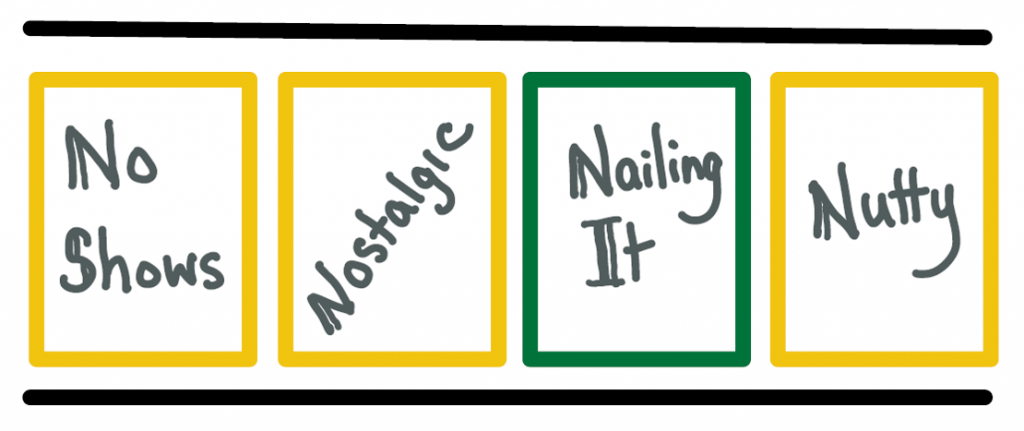A ten-year study of how Italy’s 15 largest cities weathered the global financial crisis of the late 2000s found that organizations’ decision-making styles before the collapse largely matched their styles during and after the crisis. Those that did formal strategic planning continued to do so. Those that used an incremental, ad hoc planning approach did so before and after. Those whose approach was described as “inertia” before fell into that same category after.*
Plus ça change….
One way to read these results is to infer that you can’t teach an old dog new tricks. Even a global financial crisis was not enough to change these cities’ ways.
Another way to read them might be as a reminder that, as Marshall Goldsmith has said, “what got you here won’t get you there.” If you want to emerge out of our current global crisis differently than you went in, (given that the world is now different), you’ll need to push beyond your defaults to do so.
I’m playing with the following model to describe what I’m noticing among organizations and their leaders at this stage of the pandemic:

What I’m calling the “No Shows” have gone missing in action. Not because they’ve closed, necessarily, but because they’ve gone quiet. Understandable during the early days of the pandemic when everyone was in shock, but less useful now for staying relevant.
The “Nostalgic” ones are organizations that are waiting things out, doing what they’ve always done or simply putting things on hold, hoping that this will blow over soon and we can all get back to normal. Wouldn’t that be nice.
Then there are those that are “Nailing It.” This can look like various things, including at times like the other categories, but underneath it’s quite different. It’s the place for those that are getting it right, for their context at this time. Organizations I’d put here are ones that are staying attentive, communicating clearly and often, remaining focused on their purpose, and taking adaptive action when the time is right.
Then there are those that I’m describing as “Nutty.” I picture them behaving like a pinball, bouncing frenetically in all directions in response to the latest stimuli. It’s like they overshot the mark: hearing they needed to pivot quickly, they are doing so over and over at ever-increasing speed, trying to address problems that may not be theirs to solve and not sticking with them long enough to make progress anyway.
I suspect we can find ourselves in any or all of these categories from time to time. But if the Italian experience is true to ours, then perhaps your current “home base” could not only have been anticipated by your past behaviour but will also be predictive of your future results. The behaviours that worked in the past are unlikely to work as well in the changed context of the future – you’re going to need some new tools, skills and mindsets.Your default reactions alone will be insufficient to switch categories.
If you manage to retool, you’ll stand out in your market, because most organizations don’t bother.
And if you’re already nailing it, carry on.
(P.S. – Results of the Italian study also indicated that the cities that were more strategic were also deemed more “responsible,” showing better fiscal management over the longer term. Planning helped).
* Denita Cepiku, Filippo Giordano & Andrea Bonomi Savignon (2018) Does strategy rhyme with austerity?, Public Management Review, 20:3, 421-443
And with thanks to Richard Brisebois for helping me think this through more thoroughly in a recent conversation.

